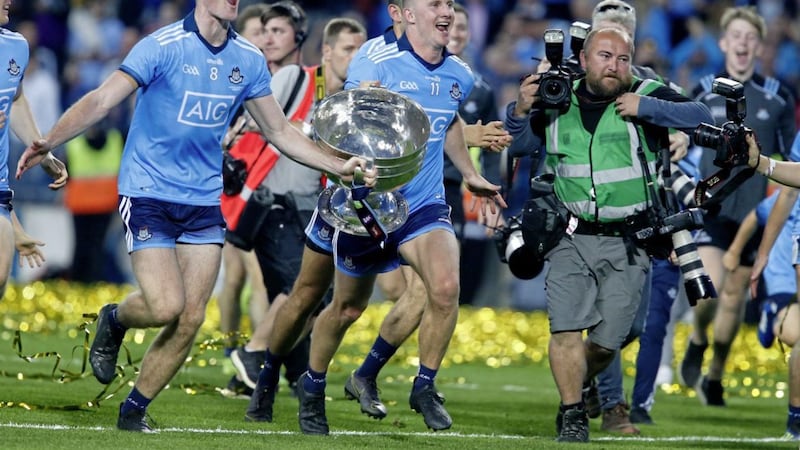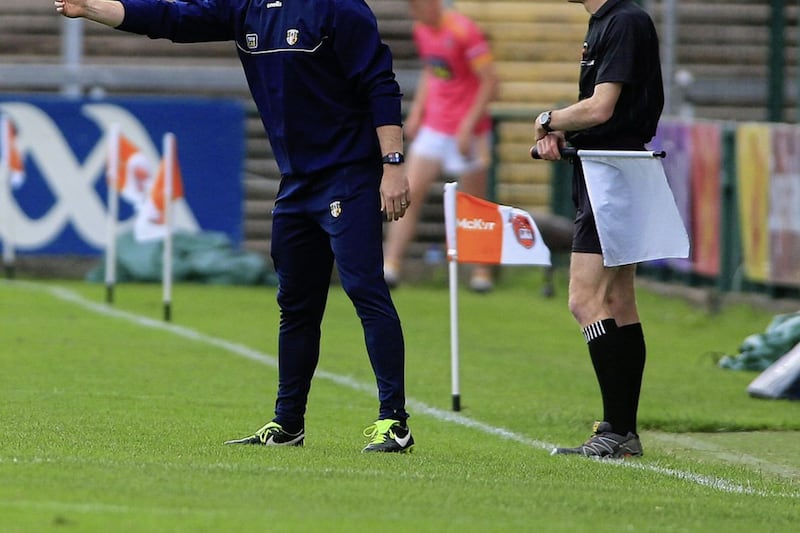IT’S Christmas so what better way to while away a few hours than to take in the recently published report of the GAA fixtures taskforce. At the very least it’s a great conversation starter at the Christmas party.
Okay, maybe not, but having seen the fixtures ‘crisis’ discussed ad nauseum it’s probably worth perusing.
The overall take home points from such a landmark piece of work appear distinctly underwhelming.
The CPA’s late withdrawal is certainly harmful to the report’s authority and suggests that alternative proposals which possibly better address the club fixture concerns were not considered in the manner they could have.
In the end, the report essentially concludes that the various changes that have come in over the past few years offer the best way forward if properly enforced.
As if to emphasise the point, they put forward two alternate suggestions which are so massive in terms of the changes to our traditional structures that I simply cannot see them as realistic options.
From the outset, it’s necessary to acknowledge just how complex the fixture issue is.
Nowhere else in sport does one body try to organise competitions across club, schools, county, local, provincial and national levels, in two different codes and where a player can be involved with one, several or all of them.
The organisers of the Premier League in England or of the European Champions Cup in rugby are not trying to sort out local club level fixtures or schools’ competitions.
Yes, our club fixtures may be arranged by our county committees, but the spaces in the calendar when they can occur are controlled by the county game and, as such, Croke Park.
This direct connection between Croke Park’s county game and our own county’s club game arises from the participation of our county players with their clubs.
It may be one of the untouchable pillars of GAA life, yet, in terms of fixtures, it is the ultimate spanner in the works.
In its review of the current state of play, the report points out the not insignificant rule changes over the past three to four years driven by Páraic Duffy.
Things like condensing inter-county competitions has increased the number of club-only weekends available between April to October from five in 2015 to 11 or12 in 2019.
Other changes include the changing of the 13-day rule for county squad availability for club games to 10, enabling anyone not on the 26-man match-day county panel to be available to their clubs, and re-organisation of the county minor and U20/21 competitions were all made, among other things, to facilitate improvement in the club situation.
The report is very clear that these changes have not been optimised in terms of the opportunities they create for club fixtures.
There will, of course, be club die-hards who will find fault with anything other than a full club fixture programme with full availability of county players.
To this end, the report’s authors are unequivocal about the primacy of the county game in its importance to the association from a promotional and financial perspective.
While unpalatable in ways, for me it is a fact that the county game brings to the GAA many things the club game, for all its virtues, cannot.
The issue then is not about complete equality between county and club games but a tolerable inequality.
The fine balance between club and county which always previously existed has been challenged due to two fundamental changes.
One was the introduction of the back-door system and the move away from the old strict Championship format.
In the traditional Championship county teams were often out earlier or, if an extended run did occur, the three- to four-week gap between games still allowed club matches to occur.
The second is the preparation levels and consequent time commitment of county teams which have increased to unrecognisable levels, even from my own time with Tyrone in the Noughties.
THE ability of county players to be active members of their club team is essentially non-existent now during the county playing season.
These two changes have combined to create the situation where county teams are all dominant and the club game has been left completely in its wake.
The report’s suggestion of enforcing the current rules is a valuable starting point in this regard but could go further.
For example, the allowance of players outside of the 26 to be released to their clubs could be extended and utilised more fully with some county fixture changes.
By fixing matches for Saturday nights during the Allianz League, clubs could play two or three matches in March and, in such games, county players who played less than a half the evening before for their club would still be eligible for their county.
Club games in March when players are mad keen for football is eminently more preferable to end-of-season league fixtures played in October and November, as happens in many counties.
Full utilisation of the 10-day rule or even changing it further to eight or nine days would allow the fixing of club games on either the Wednesday or Friday evenings the week prior to a county game while county players would more regularly be at club training if greater controls over the amount of collective team sessions a county team can carry out were imposed.
Such changes will, of course, impede to a degree the top preparation of county teams, but it begins to address a key issue raised in yet another important report published this week.
The ESRI report on inter-county participation found excessive time commitments a significant issue among current county players.
Taken in conjunction with the brewing storm regarding the financial status of many counties, especially due to the costs involved in preparing inter-county sides, it is clear that something has to give.
The compromise here is to accept that the preparation of county teams to the highest elite levels is not actually a priority.
The county game was still brilliant in the Noughties, and long before, with much less preparation time so the GAA’s primary product will still remain strong.
Of course, we have a talent in this country for finding loopholes and this is where, as raised in the report, the consistent and meaningful enforcement of rules is crucial otherwise we end up with another farce like the winter training ban.
Without a doubt, however, the greatest frustration is the absence of a fixed club fixture schedule.
During the height of summer, clubs are told there might be a game next weekend or in two weeks or there might not.
They are told their championship might be then but it depends on x, y and z.
This type of scenario treats the club game with contempt and it is this that must be eradicated by any fixture proposal.
If club teams have a set calendar, regular involvement of their county players and a proper club championship structure with adequate preparation and recovery time between games, that I imagine, would be an acceptable ‘compromise’.
And that word compromise is the key.
Clubs have to accept that they will not always have county players and that notable gaps in fixtures may occur during the main inter-county Championship.
Similarly, though, county teams have to accept that their game is not the only show in town.
Two training sessions a week is plenty and players playing club games is not a barrier to their own team’s preparations, especially if the same rules apply across the board. Status Quo 2.0 might just be the way.
Merry Christmas.








